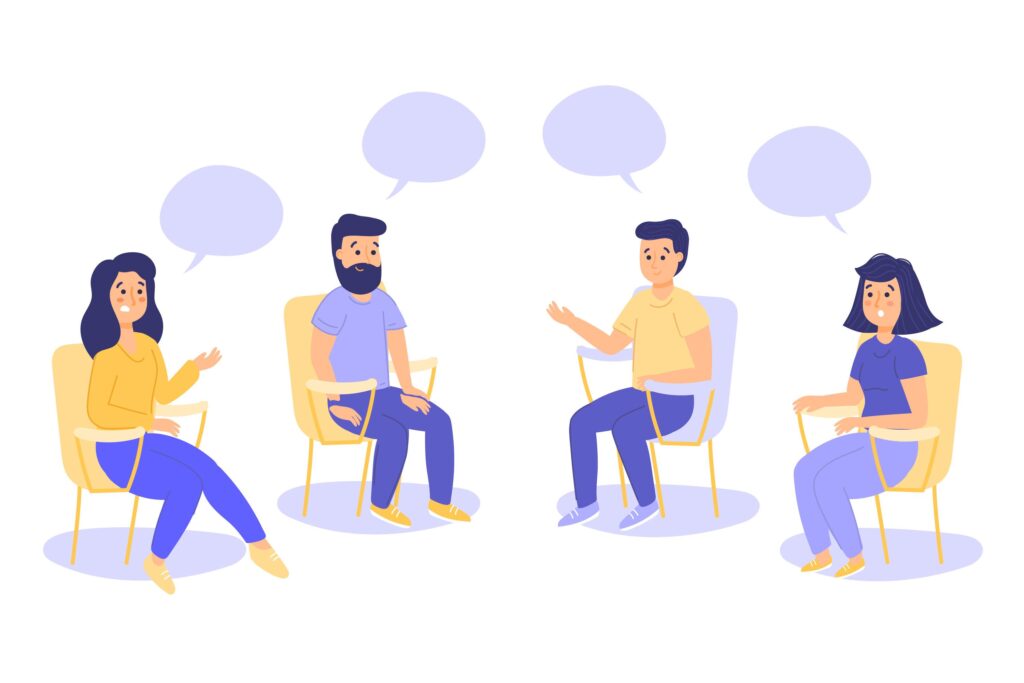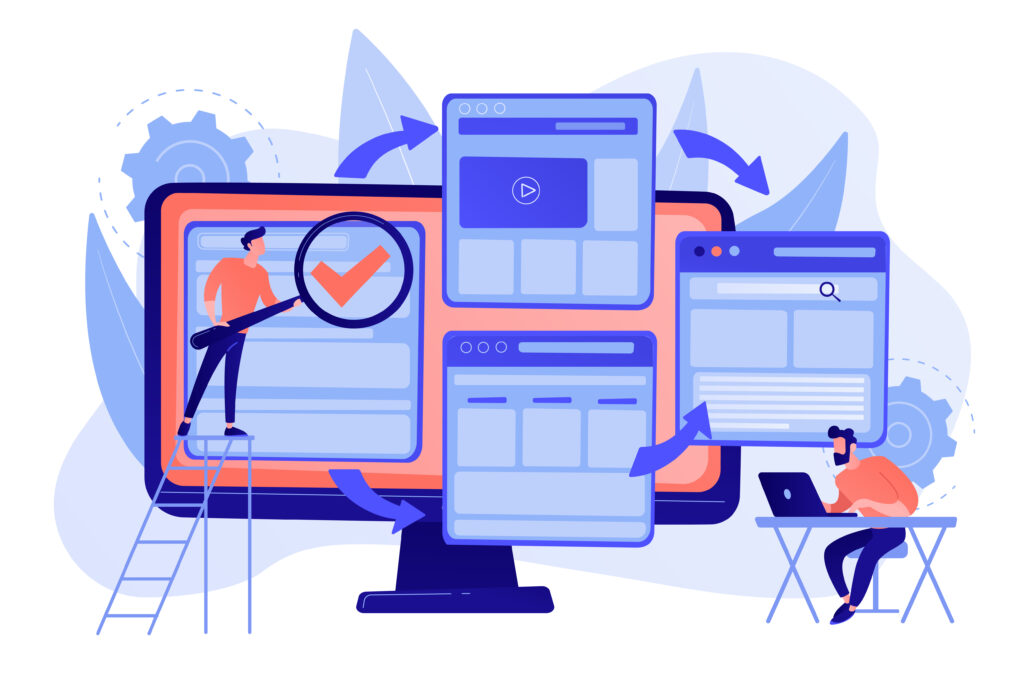One of the most important aspects of user experience (UX) research is analytics. By understanding how users interact with your content, you can make informed decisions about what to change or improve in order to meet their needs better.
However, simply relying on web analytics data isn’t enough – you also need to understand why users behave the way they do. This is where UX research comes in.
To uncover the reasons behind user behavior, various UX research methods such as surveys, interviews, focus groups, usability, and tree testing, have been widely applied. This information can then be used to improve the design and functionality of your website or app, as well as the overall user experience.
It is important to remember that no single method of conducting UX research is perfect – each has its own strengths and weaknesses. The best approach is usually to combine multiple methods, in order to get the most comprehensive understanding of your users’ needs and behavior.
Here are just a few of the ways that UX research can help you improve your content and make better decisions about your website or app:
Table of Contents
What Are Some Of The UX Research Methods?
Survey
Surveys are one of the most common UX research methods. They can provide valuable insights into what users think about your content.
There are a few things to keep in mind when using surveys. Make sure you write clear and concise questions. You want to avoid overwhelming respondents, so it is best not to ask too many questions. Moreover, there should be the option to skip any questions in case the users do not want to answer.
If you decide to use surveys, be sure to pilot-test your questions first. This will help you refine them before sending them out to a larger group.
Drawbacks:
- One downside of surveys is that they can be time-consuming to construct well-crafted questions.
- Additionally, you may not get a high response rate, which can make it difficult to draw conclusions from the data.
Interviews
Interviews are another common UX research method. They offer many of the same advantages as surveys, but they also have some important benefits.

Interviews allow you to ask follow-up questions, which can help you clarify or expand on answers. They also provide a more personal way to connect with users, which can build trust and rapport. Moreover, interviews give you the opportunity to observe nonverbal cues, which can provide valuable insights into how users really feel about your content.
Drawbacks:
- Unlike surveys, you can only get a response from a single person during interviews.
- It also requires good interviewing skills to get valuable responses.
Focus Groups
Focus groups are similar to interviews, but they involve a group of people instead of just one. This can be helpful because it allows you to get multiple perspectives on your content.

Drawbacks:
- They are often not representative of the general population – only those who choose to participate.
- People often give biased or inaccurate responses in group settings, due to things like social desirability bias.
- Focus groups can be expensive to administer if you need to reach a large number of people.
Observational Studies
Observational studies are another type of UX research method. They involve observing users as they interact with your content, in order to understand their behavior and identify which areas are liked by the customer and which are not. Observational studies can be conducted in person or online, and they offer a number of advantages.
This method allows you to see users in their natural environment, which can provide valuable insights into how they really interact with your content. Observational studies do not require any participation from users, which means they are less likely to be biased or inaccurate.
They are relatively quick and easy compared to other research methods, making them a cost-effective option for many organizations.
Card Sorting
Card sorting is one of the oldest UX research methods that are simple and assist you in understanding how user groups organize information. It involves presenting users with a set of cards, each of which contains a piece of content, and asking them to sort the cards into categories.
Card sorting allows you to understand how users think about the best way to navigate through the content on your website or application. It can also be used to generate ideas for redesigning your content structure and navigation.
Drawback:
- The results are just a way to understand how a certain user thinks and this may not be representative of the way the general population thinks.
First Click Testing
A method to understand how users navigate your content. It involves presenting users with a task and then tracking which links they click on first in order to complete the task.
By observing where users click and how long it takes for users to click, you can understand how users find the information they are looking for. It can also be used to identify areas of confusion or frustration. Moreover, you can understand immediately which pages of the website require improvement and which are providing a good user experience.
Tree Testing
When developing websites or applications, there are many different ways to accomplish the same task. Tree testing helps identify the most intuitive path for users so that designers can make the navigation as user-friendly as possible.
It involves presenting users with a task and then asking them to find the path they would take to complete the task. It is different from first click testing, which simply tests where users click first, without regard for whether or not it is the most efficient path.
Expert Review/Heuristic Evaluation
Expert review is a type of UX research method that can be used to assess the usability of your content. It involves having a team of experts evaluate your content and identify any areas that require improvement.

This method can be helpful because it allows you to get feedback from people who are familiar with the topic. It can also identify serious problems that need to be addressed.
Drawbacks:
- One downside of this approach is that it can be expensive. Additionally, you need to find experts who are willing to participate in the evaluation. Finally, expert reviews can be subjective, so taking the findings with a grain of salt is important.
Parallel Design
This method involves having a team of designers work on different versions of the content at the same time.
This method can be helpful because it allows you to explore a variety of different options. Then you can decide on the best idea. Since all designers are given the same set of requirements, the final design differs in terms of creativity and originality.
Drawbacks:
- You need to pay for multiple designers so it can be expensive. It can be chaotic and overwhelming if there is not a clear leader who is coordinating the project.
Additionally, you may end up with a design that is a compromise between different ideas, rather than a truly original piece.
If you decide to use this approach, make sure you have a clear plan in place and that everyone understands their role. Otherwise, it could be a frustrating experience for all involved.
Personas
Personas are a type of UX research method that can be used to understand the needs and goals of your users. They involve creating fictional characters that represent different segments of your user base.

This method can be helpful because it allows you to empathize with your users and can also help you generate ideas for redesigning your content.
Prototyping
Prototyping involves creating a mock-up of your website or application and then the design team can explore ideas.
This method can be helpful because it allows you to get feedback from users early on in the design process. It is a way to test the feasibility of your content with users. However, prototyping requires you to have some prior knowledge about the topic.
System Usability Scale (SUS)
In SUS users assess the usability of your content and rate their experience on a scale of 1 to 10.

This subjective evaluation can be helpful because it allows you to get feedback from users and implement changes to enhance their experience.
Task Analysis
A type of UX research method that can be used to understand the needs of your users. It involves observing and then documenting the steps that users take to complete a task.
This method can be helpful because it allows you to understand how users interact with your content. It can also be used to generate ideas for redesigning your content. However, task analysis has a few potential drawbacks.
How UX Research Methods Help You Make Better Decisions?
#1. Identify gaps in your content
If you are not sure what content to include on your website or app, UX research can help. By conducting surveys or interviews with users, you can identify the topics that are most important to them.
For instance, if you have a fitness application you can learn the features that customers would be most interested in. It could be having a diet plan, tracking their progress during workouts, or receiving tips from experts. While identifying gaps in content, it also makes sense to research what your competitors are doing. If you find that a competitor is ranking for a keyword that you are not, then you need to create content around that keyword.
Another way to identify gaps in your content is to look at your website’s analytics data. If you see that a particular page is getting a lot of traffic but has a high bounce rate, it could be because the content on that page is not relevant to what people are looking for.
#2. Optimize your content for search engines
In addition to helping you identify the right topics to write about, UX research can also help you optimize your content for search engines.
By studying how users interact with search engines, you can learn which keywords and phrases are most likely to bring them to your website or app. You can then use this information to improve your website’s search engine optimization (SEO).

You need to optimize your content according to keywords in order to start ranking on search engines. As a result, you need to know which keywords are most relevant to your business which can be done when you are researching topic ideas.
In the case of the wellbeing application, a relevant keyword phrase around which you can create content is “keto diet”. You can find keywords or semantically related keyphrases while developing a content strategy.
Remember: your aim is to improve your user experience, and if you rank on the keywords that potential clients are searching for, it is a good sign that you are answering people’s queries and so you are heading in the right direction.
#3. Improve the usability of your website or app
Usability testing is a type of UX research that specifically focuses on how easy it is for users to use your content. It typically involves administering a series of tasks or questions to users and then observing their behavior.
Tests can be conducted in person or online, and this research method helps you make better decisions.
Usability testing is used by many organizations. It can be used to compare the performance of different versions of your content, which is helpful to determine which one is more effective. For instance, flashy banner versus static image advertising, or long-form versus short-form content.
With usability testing, you can observe users as they interact with your website or app, and find out the possible parts of the website or application that are likely to cause frustration. By making small changes to the design and functionality of your site or app, you can often dramatically improve the user experience.
#4. Increase engagement with your content
With UX research, you can understand what type of content is most interesting and useful to your users and how often they want to see it. To increase engagement, you need to ensure that your content is timely, relevant, and interesting.
You can then use this information to create a content strategy that will encourage users to keep coming back to your website or app.
Researching the potential use cases for your application can also help in creating a description of how users will interact with your content.
In addition to that, with research, you can learn about the unnecessary elements in the website or mobile application that might be cluttering. Remember, there should be as few distractions as possible between the CTAs and the end goal (signup, add-to-cart, etc.)
#5. Make better decisions about your website or app
Ultimately, the goal of UX research is to help you make better decisions about how your website or app functions.
You can use UX research to learn about the factors that influence conversion rates. This could include the design of your website, the placement of call-to-action buttons, or the copy on your landing pages.

A/B testing is another type of UX research that can be used to compare the performance of two different versions of your content. Unlike usability testing, which typically involves administering tasks or questions to users and then observing their behavior, A/B testing involves randomly assigning users to one of two groups. Group A will see version A of your content, while group B will see version B.
A/B testing is a more controlled way to compare the performance of two different versions of your content. It can be used to test anything from the effectiveness of different advertising campaigns to the overall layout of your website. However, A/B testing can be time-consuming and expensive, particularly if you have a large number of users.
Wrapping Up The UX Research Methods for Better Analytics and Content Optimization
There are numerous UX research methods at your disposal. As a UX researcher, it is important to select the right research methods so you can get accurate and reliable data.
However, the best approach will also depend on your organization’s specific needs and goals. The decision will be made according to the resources available and the time frame for the project.
Some of the most common methods include surveys, interviews, focus groups, observational studies, and usability testing. Each of these approaches has its own advantages and disadvantages, so it is important to select the method that your organization deems to be the most suitable.
These methods offer a good starting point for understanding how to conduct UX research. With the right approach, you can gain valuable insights into your users’ behavior and preferences – information that can be used to improve your content and optimize your website or mobile application.
By understanding how users interact with your content, you can make informed choices about what to change or improve in order to meet their needs better. In the end, this can lead to a more successful website or app – and a better overall user experience.
Author Bio
Osama Zahid is a technology content strategist who is passionate about content marketing and all things SEO. He has helped various companies rank their content on the first page of search engines. In his free time, Osama loves to play football and travel.
Don't forget, sharing is caring! :)


